Back in 2011 when I put up the original article on pottery books, I made the comment that I was not a potter. Since then, I have learned about hand building pottery, including putting together thirty five or so ollas by coiling as well as a few other fun things. It is my ambition to make something from scratch, by winning and preparing the clay, forming the object and then firing it in the backyard. Some of these books will help me achieve that!
Pottery – The Technique of Throwing – John Colbeck – B.T. Batsford Ltd – (UK) 1969 ISBN 0 7134 2560 1 – This is a great book with simple instructions and lots of photos. It starts of with a discussion of the equipment and clay, then moves on to the techniques for centring, opening, throwing and turning. The book then talks about cutting and trimming, centring and opening large pieces of clay, flat forms, throwing on a large scale and tall forms. It finishes of with some more complicated techniques, a summary and list of suppliers (old and for US & UK only). The book has LOTS of B&W photos.

The Japanese Pottery Handbook – Penny Simpson & Kanji Sodeoka – Kodansha International (JAP) 1979 ISBN 0 87011 373 9 – This book is liberally interspersed with detailed line drawings which mate the text easier to understand and all names are given in Japanese as well as English. Chapter one covers tools and equipment including making some tools from bamboo, a plan for the workshop, and wheels. Chapter two covers the forming processes such as hand forming, coiling, moulding and slip casting, slab building and throwing. Chapter three covers decoration including glazes, chapter four covers types of kilns and how they work and chapter five provides descriptions of pots, including for cooking and eating, tea and teapots, cups, serving dishes lids and handles. While there is not a lot of text on each subject the line drawings provide a lot of information. The book has no photos.
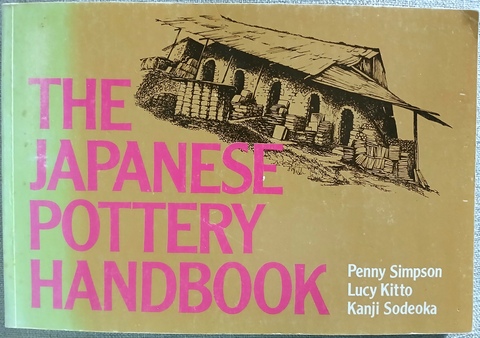
Rock Glazes – Ivan Englund – Self Published (AUS) 1983 ISBN 0 9591764 0 3 – If you are hard core and want to make your own glazes from rocks, this is the book for you! The chapters of the book include suitability rocks and glaze materials, including sedimentary rocks, shales and clays, igneous and metamorphic rocks. A couple of pages on basic geology, the serger formula and how to use it with various rocks, with formulae and calculations. This is followed by glaze calculations, preparation of rock materials, and making glazes from 22 different Australian rocks. At 75 pages long it is not a big book but is very information dense, there are the odd colour and B&W photos.

Kiln Building – Ian Gregory – A & C Black (UK) 2001 ISBN 1 8892 5002 3 – There are seven chapters running from a couple of pages thirty pages long. Chapter one is kiln planning and the shortest at two pages long, followed by chapter two, choice of fuels covering wood, oil, coal and gas. Chapter three covers kiln types and design considerations talking about updraught, downdraught and cross draught kilns. Chapter four talks about materials of construction of the kiln and chapter five covers construction methods and equipment required. Chapter six, longest in the book at 30 pages gives a series of plans for different types of kilns and chapter seven discusses several experimental kiln designs: paper kiln, imaret and the fire tree. The book has lots and lots of colour photos and line drawings.

Using the Potter’s Wheel – Donald Campbell – Prentice Hall Inc. (US) 1978 – The book is divided into seven chapters, chapter one covering the basics like wedging, centring, opening, lifting and shaping. The remaining chapters cover the processes behind making such items as bowls, pitchers handles and plates, lids and jars and teapots. Chapter six covers ‘other forms’ such as compote, bottle, goblet doughnut and casserole. Chapter seven covers ‘altered forms’ including serving dish, flattened vase, square jar and inverted square jar. The book has a large number of B&W photos.
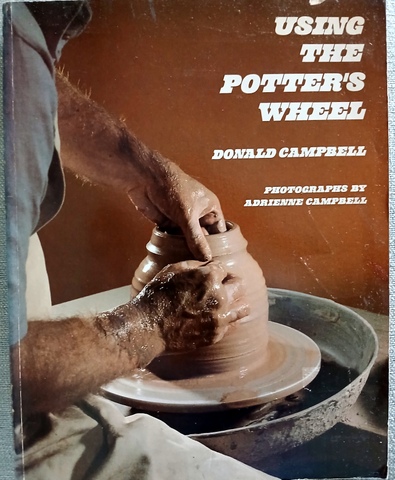
Pottery: A Manual of Techniques – Doug Wensley – The Crowood Press (UK) 1989 ISBN 1 85223 176 9 – This is a very comprehensive book. The first chapters discuss what clay is and how it is prepared for use in pottery. Chapter three discusses how to design articles in pottery, chapter four covers setting up the workshop/studio and chapter five covers equipment and tools required. Chapter six covers techniques for hand building pots such as pinching, slabbing and coiling along with a number of projects in each technique. Chapters seven and eight cover using the potter’s wheel and turning, chapter nine talks about firing including various types of ware including glazed ware, packing and firing a kiln. Chapter ten cover the processes associated with raku. Chapter eleven discusses the nature of glazing Chapter twelve covers decoration and chapter thirteen covers mixing and applying glazes. The book has lots of line drawings and B&W photos and a section of colour plates depicting completed pottery projects.

Potters Techniques Manual – Morgan Hall – Apple Press (UK) 2002 ISBN1 84092 361 X – The book starts with a comprehensive introduction covering clay, different types, reclaiming and preparing and storage, followed by slip, how and when to apply it, glaze – types and tools required to apply it, plaster, kilns and firing including building and firing a sawdust kiln. The book then goes on to cover the different techniques used by potters to construct their pottery. There are chapters covering pinching, coiling, slabbing, using formers and simple moulds, throwing and turning. The book has lots of colour photos.
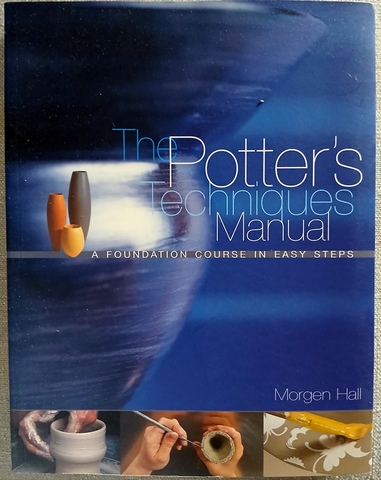
The Thames and Hudson Manual of Pottery and Ceramics – David Hamilton – Thames and Hudson (UK) 1974 ISBN 0 500 68007 8 – This book has 19 short chapters starting out with the historical development of ceramics, the chemistry of clay, and clay preparation. The book moves on to types of kilns (gas vs electric) and techniques for measuring temperature. This is followed by hand tools for forming clay, hand methods for forming clay and slip casting, then machine methods for forming clay (eg potter’s wheel), engobes (a type of slip) and drying and firing. Next is changing the surface after firing, glazes, colour and texture in glazes, glaze application, glaze firing and on-glaze decoration. This book is aimed at the professional rather than backyard potter. The book has a few colour photos and line drawings amnd quite a number of B&W photos.

How to Make Pottery – Muriel Pargh Turoff – Crown Publishers (US) 1961 ISBN Not Available – Chapter one discusses material, tools and equipment for various pottery operations, chapter two talks about storing, processing and drying clay, chapter three discusses the intricacies of making ceramics including preparing clay, coiling, templates, pinching, slabbing, using the potter’s wheel and various projects to practice these skills. Chapter four covers decoration such as sgraffito (???), slip painting and tracing, underglaze and overglaze, chapter five covers tile making, and chapter six covers ceramic jewellery. Chapter seven talks about building an inexpensive electric kiln, staking and firing it, chapter eight covers glaze and glazing, chapter nine covers design and chapter ten covers children and ceramics. The book has lots of line drawings.

The Complete Book of Pottery Making – John B. Kenny – Chilton Company: Book division (US) 1949 ISBN 978 0 27340 803 1 – The book has thirteen chapters – Chapter one is an introduction to buying, preparing, wedging and storing clay as well as the pottery studio and tools required. Chapter two talks about getting started, coiling, slabbing, grog, simple shapes and a few projects, chapter three talks about the potters’ wheel, chapter four is about buying and using plaster of Paris, Chapter five covers moulds and moulding, chapter six, slip casting, chapter seven is about making plaster moulds. Chapter eight is about clay and clay bodies including chemistry, geology, digging your own, shrinkage and some recipes, chapter nine is about firing, chapter ten glazes generally and chapter eleven is about mixing glazes, chapter twelve is about decoration. Chapter thirteen, entitled ‘do potters eat?’ explores making a living from pottery. The book has quite a few line drawings and B&W photos and some colour plates.

Pots for Plants and Gardens – John Huggins – Kangaroo Press (AUS) 1991 ISBN 978 0 86417 409 8 – At 96 pages including index, there is not a huge amount of detail in this book with some chapters averaging 5 -6 pages long and the chapter on throwing being 14 pages. Chapter one covers clay and its preparation, chapter two the technique of throwing pots on the wheel, cand chapter three covering press moulding. Chapter four covers machine assisted production (using a hydraulic ram) briefly, chapter five covers handbuilding (coiling, slabbing and pinching) also briefly, and chapter six provides information on design and decoration including decoration on the wheel and later in the process, plus slip and glaze decoration. Chapter seven covers drying and firing, chapter eight covers weather resistance, chapter nine, plants for pots and chapter ten discusses production of decorative bricks, tiles and other ornaments. The book has lots of colour and B&W photos and a few line drawings.
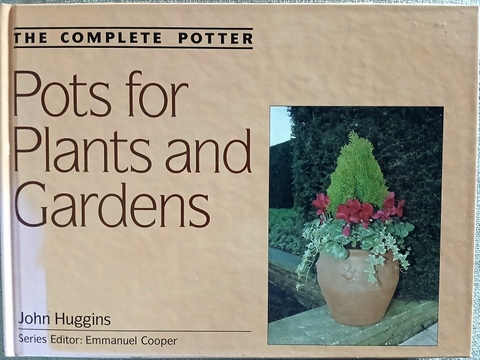
Throwing Pots – Phil Rogers – A&C Black Publishers (UK) 1995 ISBN 976 6410 14 1 – Chapter one covers equipment particularly the wheel and points to keep in mind when choosing a potter’s wheel and a list of other tools required when potting on the wheel. Chapter two covers clay preparation including wedging and kneading, chapter three talks about making a start including centring on the wheel and chapter four talks about two ‘families’ of pots: those taller than they are wide and wider shallow forms like bowls and how they are formed on the wheel. Chapters five to nine cover the intricacies of producing specific articles on the wheel: the jug, a plate, bottles, a teapot and lids respectively. Chapter ten discusses the mechanics of turning in general terms, chapter eleven covers faceting a small bowl and how to do it, chapter twelve covers design, including use of a sketchbook and chapter thirteen (A Step Further On) provides ideas based on previous information. The book has lots of colour and B&W photos and line drawings.

The Pottery Workshop – Charles Count – Collier Books (US) 1973 ISBN 0 02 011230 0 – While there is a quick mention of pinching, coiling and slabbing, this book is primarily about throwing on the wheel. Chapter one talks about the authors experience with potting, chapter two covers clay including digging, testing and preparing the clay for use. Chapter three covers shaping and forming including hand building, building your own wheel including materials required and construction drawings, exercises on the wheel and trimming and finishing (over 80 pages). Chapter four gives a quick discussion on individual expression and chapter five covers working with decoration. Chapter six covers working with glazes including testing, developing and applying glazes, Chapter seven covers firing the clay including types of kilns, building your own (gas fired) kiln, stacking it, measuring the temperature, operating and cooling the kiln. Chapter eight covers marketing your own pottery. The book has lots of B&W photos.

Practical Pottery – R. Horace Jenkins – The Bruce Publishing Company (US) 1941 ISBN 978 1 135386 64 1 – This book has twenty two chapters ranging from four to eleven pages. Chapter one gives historical perspective, chapter two is about clay and clay preparation, chapter three, hand built pieces and chapter four suggested designs and decorations. Chapter five covers plaster of Paris and mould making, chapter six casting, chapter seven throwing, chapter eight turning, trimming and drying and chapter nine covers throwing large pieces. Chapter ten covers tilemaking, chapter eleven covers pressing and making irregular shapes. Chapter twelve covers clay work in school and chapter thirteen talks about commercial production. Chapter fourteen covers biscuit firing, chapters fifteen to eighteen cover different aspects of glazing, chapter nineteen covers problems and defects with the clay, glaze and moulds. Chapter twenty covers equipping and setting up a pottery shop, chapter twenty one covers general information on chemicals used, weights and measures measuring kiln temperatures with cones. Chapter twenty two talks about the joys and sorrows of pottery making. The book has lots of B&W photos and line drawings.

The Electric Kiln – Harry Fraser – A & C Black (UK) 1994 ISBN 0 7136 3745 5 – This book gives the ins and outs of how electric kilns are designed, sited, constructed and used. The book covers kiln types, selection and siting, construction and design, refractories and insulation, controls and accessories, wiring the kiln, kiln heating elements, firing control, thermocouples and thermoelectricity, temperature measuring, kiln furniture and loading the kiln. Also covered is effects of heat on clay, glazes and pigments, craft and industrial heating procedures, firing the kiln, special effects (reduction, raku, crystal glazes), defects in fired ware, maintenance and repair and safety considerations. The book has a few colour photos, but most are B&W with a few line drawings thrown in.
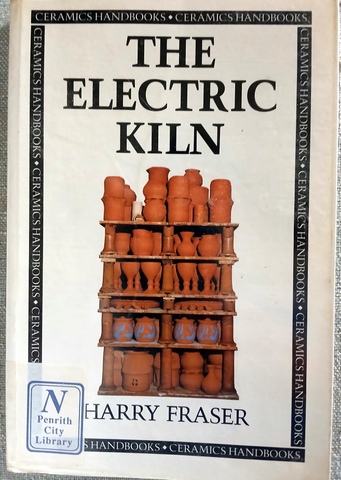
Notes for Potters in Australia, Vol 1: Raw Materials and Clay Bodies – Ivan McMeekin – NSW University Press (AUS) 1967 ISBN 978 0 868402 09 3 – Part one - Raw Materials: origins and characteristics, discusses geology: rocks and minerals other than clays and shales; clays and shales; a note on plasticity. Part two – Clay bodies provides and introduction to earthenware, stoneware and porcelain; characteristics of clay bodies, the development of body characteristics, compounding bodies and testing and preparing clays and bodies. The book has eight B&W plates.

A Potter’s Book – Bernard Leach – Faber and Faber Ltd (UK) 1945 ISBN 978 0 571283 67 5 – The book is broken up into eight chapters, interesting note: the last chapter (eight) on the contents page is listed as beginning on page 142, whereas it actually begins on page 214 (my copy anyway!). Chapter one, towards a standard, specifically contrasting pottery artistic standards of Japan vs Europe, Chapter two describes raku, English slipware, stoneware and porcelain. Chapter three covers types of clays, how they are tested and how they are prepared for use by the potter, chapter four covers techniques for making clay shapes and chapter five covers how pottery can be decorated including tools required. Chapter six covers pigments and glazes, including how glazes are manufactured and applied to various clays, chapter seven talks about kilns, how they are constructed, packed and fired, chapter eight covers how to set up a potter’s workshop. The book has lots of line drawings, some B&W photos and a few colour photos.
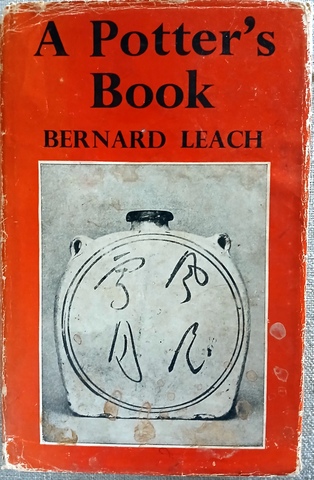
A Potters Note Book – Landale Beetson – Shakespeare Head Press Pty Ltd (AUS) 1949 ISBN (Not Available) – This is a small book of less than 100 pages. Subjects covered include types of clay, washing of clay, clay or pottery bodies, casting slips, raw materials, throwing, building articles by hand, glazes and glazing, quality and colour, methods of decorating pottery, kilns and firing temperatures, mould making and elements of potter’s chemistry. The book has a few line drawings and fifteen B&W plates at the end of the book.
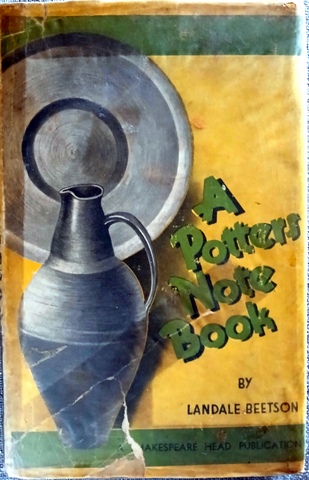
Glazes for Australian Potters – Janet DeBoos – Cassell Australia (AUS) 1978 ISBN 0 7269 2212 9 – This is a small book with lots of glaze formulations in it! Thes book is divided up into five sections: Section A Discusses the components of glaze formulations, including the glass former, flux, glass stiffener, colourants and opacifiers, then goes through the process of mixing, storing and testing glazes. The next three sections are set out for specific firing temperature ranges giving formulations, then describing how they look after oxidising and reducing kiln firings. Section B discusses glazes for earthenware temperatures - between 1060°C and 1120°C; Section C discusses glazes for firing temperatures between 1140°C and 1220°C and Section D discusses glazes for firing temperatures between 1250° and 1305°C. Section E discusses glaze faults and how to correct them. All up there are 154 glaze formulations in the book. The book has a few line drawings, and four double sided colour plates scattered throughout it.
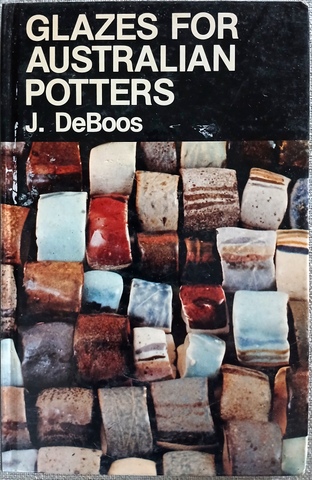
Clays – Frank and Janet Hamer – Pitman Watson- Guptill (US/UK) 1977 ISBN 0 273 01000 X – The book commences with a chapter on the origin and geology of clay including field tests for assessing the clay, Chapter two talks about the structure and chemistry of clay, chapter three discusses the workability of clay and how it may be improved, and chapter four covers the dewatering of clay. Chapter five covers slip, how it is made and how it is used, chapter six discusses how clay may be prepared for use in potting including kneading and chapter seven covers buying clay for pottery work. The book has a few line drawing and B&W photos.

Pottery – Emmanuel Cooper – Macdonald Educational Ltd (UK) 1976 ISBN 0 356 06001 2 – The book is set out in three sections, the first being ‘Information’ which discusses kilns and firing, colourful earthenware, stoneware and saltglaze, the art of decoration, the ceramics industry and pottery today. The second section ‘Activities’ discusses clay and its care, preparing the clay, techniques like slabbing, pinching and coiling, decoration, press moulded pots, throwing on the wheel kiln and biscuit firing, glazes and home firing. Subjects cover one or two pages with a number of photos and/or line drawings. The third section is ‘Reference’ providing details on craft societies, courses, museums and galleries displaying pottery, booklist, suppliers and glossary (being almost 50 years old and in the UK, most of this info would be out of date!). The book has lots of B&W photos, some colour photos and line drawings.



